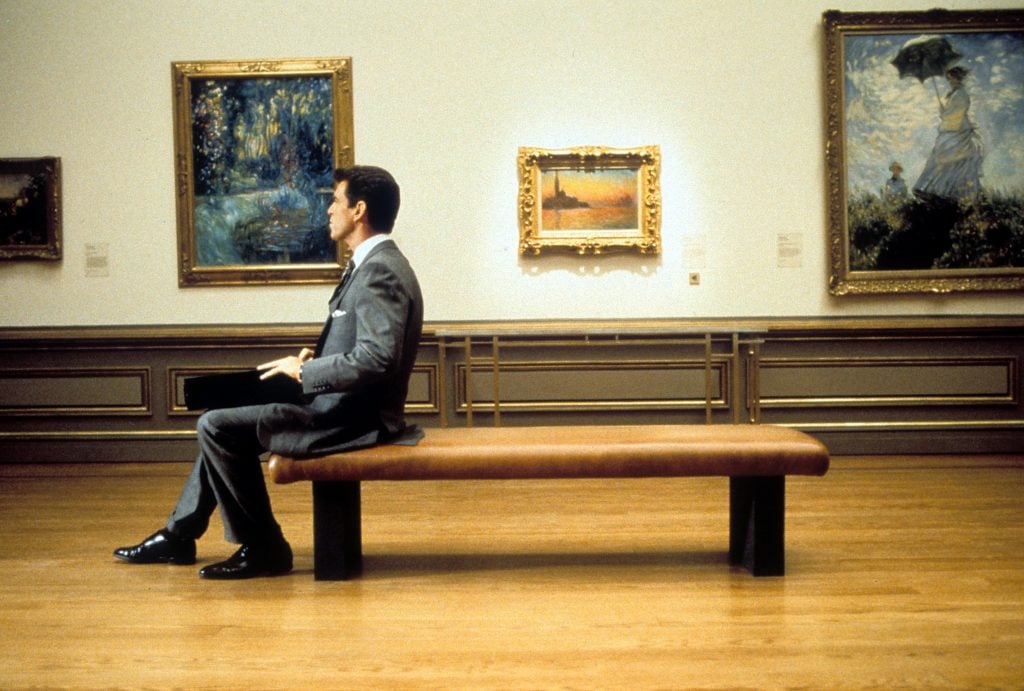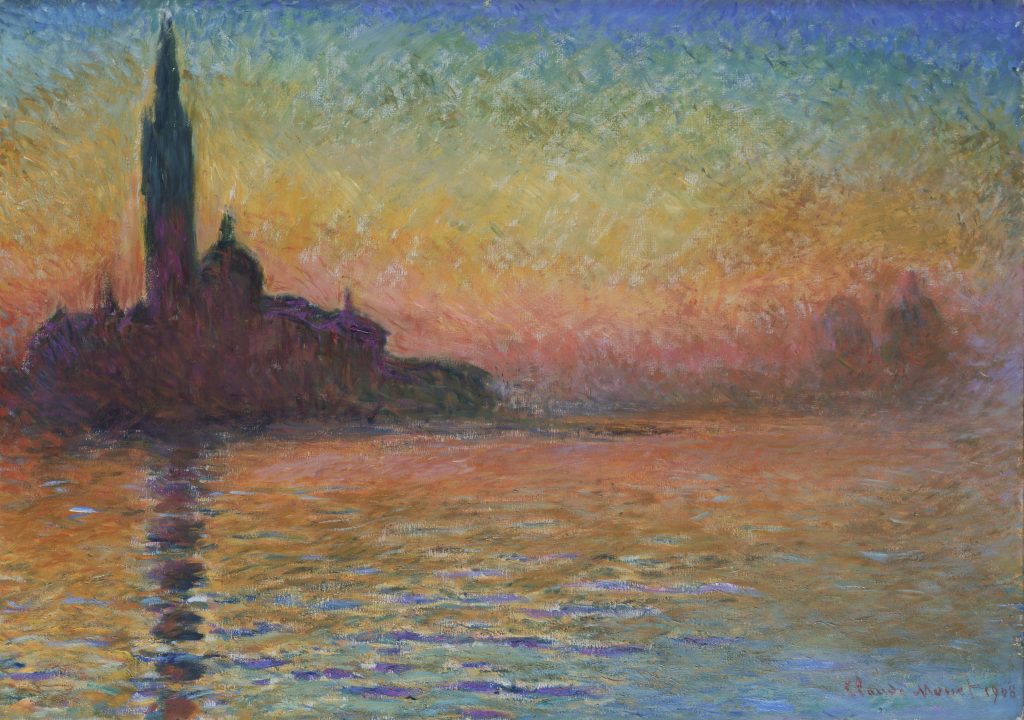Pop Culture
As Seen on ‘The Thomas Crown Affair’: A Monet Canvas That Reveals Layers of Fakery
The painting doesn’t appear in the museum’s collection, and the museum isn’t the museum.

An Impressionist canvas at the center of the 1999 heist-romance film The Thomas Crown Affair effectively echoes some of the movie’s themes, in ways that art nerds will love.
Directed by John McTiernan (Die Hard, The Hunt for Red October), the movie is a remake of the 1968 heist film starring Steve McQueen and Faye Dunaway. It casts Pierce Brosnan, Denis Leary, and Rene Russo in the lead roles, with a painting of Venice at dusk by Claude Monet in a supporting role. Let’s see how the canvas, recreated for the screen by replica painters Galerie Troubetzkoy, and one of the key shooting locations echoes the film’s central themes.
The titular character is a playboy billionaire who steals Monet’s Venetian landscape San Giorgio Maggiore at Dusk from New York’s Metropolitan Museum of Art; the painting is said to be worth $100 million (which isn’t far off from the actual value of Monet’s priciest works at auction today). Detective Michael McCann (Leary) heads up the investigation, with insurance investigator Catherine Banning (Russo) also on the scene.
Crown lends a Camille Pissarro to take the Monet’s place; Banning intuits that he committed the crime purely for the fun of it. When she manages to search his home, she discovers the “Monet,” which turns out to be a copy painted over a canvas of dogs playing poker. When she confronts Crown with her findings, they consummate a building sexual tension.
After various romantic and investigatory developments, Crown offers to return the Monet. Police stake out the museum, but Crown foils their attempt to arrest him as numerous men, dressed identically in bowler hats as if stepping out of a René Magritte canvas, proliferate in the lobby. Crown sets off a smoke bomb and the museum’s sprinklers activate, washing the paint off of the Pissarro he lent, revealing—ta-dah!—that it is none other than the stolen Monet.
In the final scenes, Banning goes to Crown’s apartment but finds only a man in a bowler hat, who presents her with a painting that she once told Crown she preferred over the Monet. She sends the painting to McCann and boards a flight to London, where she is reunited with fellow-passenger Crown.

Claude Monet, San Giorgio Maggiore by Twilight (1908). Photo: National Museum & Galleries of Wales Enterprises Limited/Heritage Images/Getty Images.
Two key facts in the film depart from the artistic reality. They are both a kind of counterfeit, so they align perfectly with the movie’s themes.
For one, the Met, while it is stocked with dozens of Monets, does not own a copy of San Giorgio Maggiore at Dusk (which exists in two versions, now residing in museums in Wales and in Japan). It does, however, own the Impressionist’s The Doge’s Palace Seen from San Giorgio Maggiore (1908). So there is a kind of reversal here that echoes the various reversals in the plot; the museum owns a painting not of San Giorgio Maggiore, but rather one with the view from that islet.
Second, anyone who knows the New York museum will recognize that the climactic scene with the men in bowler hats does not take place in that hallowed building. (The request to film there was reportedly “respectfully declined” so the museum would not be seen as endorsing wrong impressions of how security works.) Some museum scenes were shot on a soundstage, but the dramatic scene of the Monet’s return was shot two miles south, at the main location of the New York Public Library (famous for the lions guarding its entrance). It, too, sports grand marble architecture and dramatic stairways, so in one way it’s simply close enough for jazz, as the saying goes. But in another, it’s actually funny and appropriate that the filmmakers chose a counterfeit location—and, like Crown himself, left the fake in plain view.





